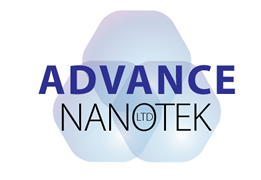
Cloud computing has transformed the way we work and consume content, with vast amounts of data being delivered quickly into our homes and devices every day.
The next phase which is already well underway in this space is ‘Edge’. Many different types of businesses are using the Edge to their advantage without customers ever realising it’s happening.
So what is the edge, and why does it matter? And more importantly for investors, should you get exposure to it? To answer these questions, it may help to begin by painting a familiar scene.
Picture yourself on the couch one evening binging Stranger Things on Netflix. Now suppose millions of other people around the world are accessing the same episode you are at the same time.
If this scenario was playing out in 1980 (impossible I know, but bear with me) then the show and its data would have been stored and processed on some kind of freakishly large supercomputer in the basement of an IBM owned warehouse in Silicon Valley.
With millions of people trying to ping that supercomputer to gain access to the episode, the supercomputer would have become, well, not so super, and crashed under strain.
Fast forward to 2020, and now the episode is stored in many places all over the world (i.e. the Cloud), then processed locally on each device (i.e. your TV), and so the strain on each part of the delivery system is virtually non-existent.
This is the principle behind Edge computing. It goes beyond storage in the Cloud, to storage as near as practically possible to the source that requests it. But it’s also about processing data as close as possible to the source that requests it as well – more and more on the device itself (known as the ‘Internet of Things, or IoT) – to prevent unnecessary congestion.
All up, it’s best delivered as a two-pronged attack:
- Data storage as near as possible to the requesting device, and;
- Processing done by the device that requests it
As you can begin to imagine, Edge computing has a multitude of applications and lots of companies out there handle one or both prongs as part of their strategy. In fact, chances are you already own companies that do this.
Let’s take a closer look at a few companies listed on the ASX that operate more obviously in this space.
NextDC (ASX:NXT)
A high-quality industrial play that is a current market leader in Australia is NextDC. They own and operate a number of Data Centres (DCs), which are the backbone of the Cloud and provide the physical infrastructure needed for companies to store and process their vast amounts of data.
For small software companies who don’t have the time, technical expertise or funds to run their own infrastructure, this is the sort of business they will turn to. Companies lease cages, racks, servers and storage, and NextDC collects a steady and reliable source of recurring revenue.
Data Centres are capital intensive businesses however, making them difficult to get up and running. They’re also highly competitive, with several other players in Australia vying for customers.
Nevertheless, the DC industry is experiencing ever-increasing demand for storage as more and more business need reliable and secure facilities. This in turn makes the humble DC the heart and soul of the Edge, from which many other businesses stem.
DXN (ASX:DXN)
A much smaller player in the DC arena is DXN. Recently they opened their first centre in Sydney, with further plans to open a facility in Melbourne. Although the long-term profitability of this company will be driven by DC rental space, they are carving out somewhat of a niche as a builder of self-contained ‘mini’ DC’s built inside of shipping containers and are winning a number of contracts to deploy cable landing stations in the APAC region.
Their smaller scale allows them to be a little more flexible than NextDC when it comes to smaller contracts, and the fact that they control the entire build of their mini-centres in-house means there is a tight integration and high-quality build, which could be attractive to more niche and security-minded firms.
However, they are still a long way off profitability, and their growth will rely heavily on more shareholder capital in the coming years. A risky investment for the time being, but certainly a company to keep on the radar if they execute well, continue enhancing their reputation for quality, and tip into profitability.
Dubber (ASX:DUB)
Unlike the simple storage solution that DCs bring to the Edge, companies like Dubber concern themselves more with the processing side of things.
Dubber is a cloud-based call recording company that is used by call centres, financial institutions, retailers and many other types of businesses to create business efficiencies through automation and machine learning. It’s essentially a mix of three themes; Edge, AI and Big Data, all in one.
Call recordings are all housed in Data Centres before being ‘fetched’ for analysis by software on various devices. What’s especially useful for clients is that Dubber’s software integrates with existing business software – for example CRMs like Salesforce – making integration easy, whilst leveraging existing hardware to do much of the processing work. It makes things quick to get up and running at an attractive price point.
This ‘PaaS’ model (Platform-as-a-Service), has it allowed it to capture market share quickly and easily, with an impressive revenue increase in FY19 of over 100%. Although still loss making, it is starting to see the benefits of scale come through with about 120,000 end users now using its service and a close relationship with American giant Cisco Systems which could propel them to new heights.
Catapult (ASX:CAT)
A Strawman favourite, Catapult provides wearable devices for Athletes to track various fitness metrics. What makes their business interesting is the mix of processing and storage that happens on a number of devices and locations.
Metrics like heart rate, speed and distance are stored locally and/or in the cloud, before being analysed on virtually any device such as smart phones, watches, tablets, laptops and PCs. For elite teams that regularly travel the world, having speedy access to historical data can be critical to the outcome of a game in play, so data deployment over several locations across the globe is crucial, as is timely analysis on-device.
Despite some recent acquisition challenges, Catapult looks to have launched themselves back into the game with some impressive results in recent times and might be worth another look.
Conclusion
Hundreds of companies listed in Australia are utilising the Edge as a way to make their products and services quicker and thus more attractive to their end users, so the list doesn’t stop with the four I’ve outlined here. Others, like another Strawman favourite Rectifier Technologies (ASX:RFT), are ‘pick and shovel’ plays that support Edge companies like NextDC with electronic componentry.
Just remember that the Edge is a tool that helps new types of businesses deliver new types of products and services, nothing more. Thus, the most important question to consider before singling out the Edge as an investment theme is not whether a company uses the Edge. Rather, it’s ‘what value does using the Edge bring to this company’s customers?’
If the answer is ‘a lot’ then it may be worth a closer look, because value creation is arguably the best metric to gauge future success.
Ben Stevens is a Melbourne-based private investor and Director of design studio Blendid. He specialises in working with passionate founders from innovative companies to establish their brand, find their voice and ultimately drive results.
Follow him on Strawman, or on twitter.
Strawman is Australia’s premier online investment club. Join for free to access independent & actionable recommendations from proven private investors.
Disclaimer– The author may hold positions in the stocks mentioned in this publication, at the time of writing. The information contained in the publication and the links shared are general in nature and does not take into account your personal situation. You should consider whether the information is appropriate to your needs, and where appropriate, seek professional advice from a financial adviser. For errors that warrant correction please contact the editor at [email protected].
© 2019 Strawman Pty Ltd. All rights reserved.
| Privacy Policy | Terms of Service | Financial Services Guide |
ACN: 610 908 211







